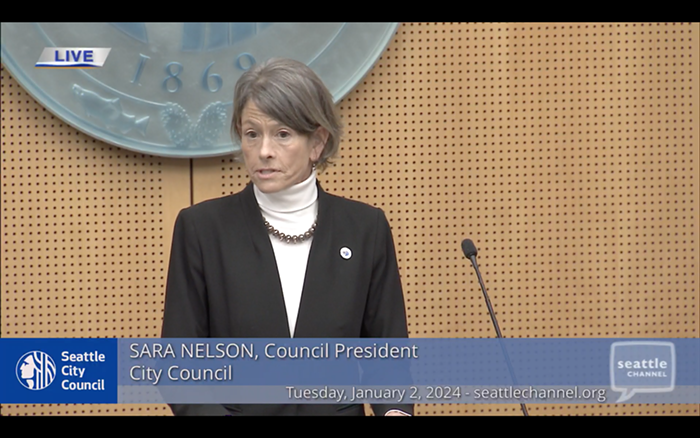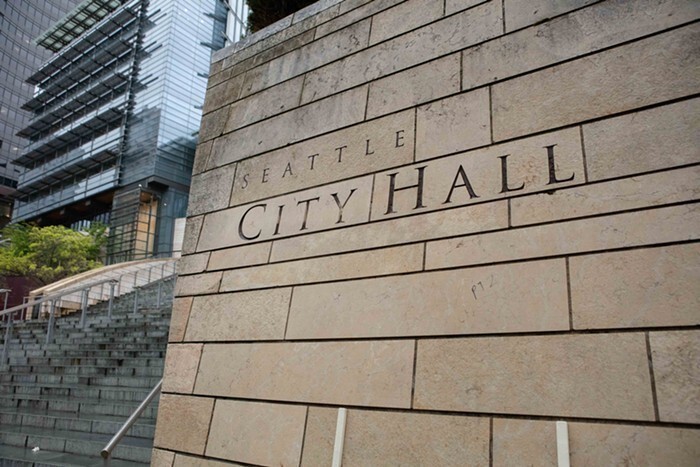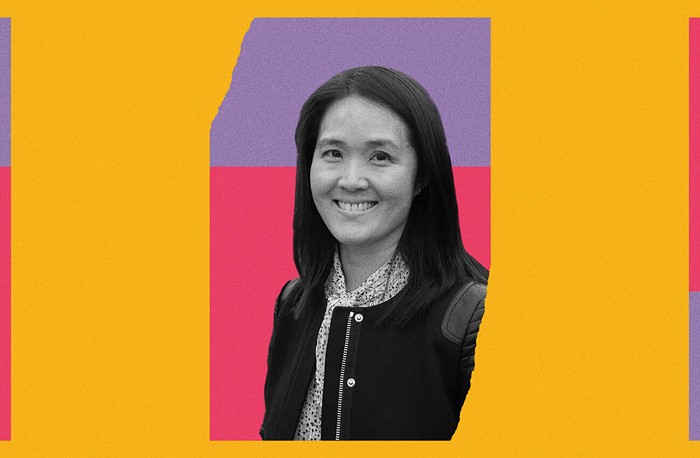Museums, too, are repositories of self-image, and when museums--especially those housed in expensive failures--founder and die, the local psyche undertakes some furious rejiggering. Here, the Bellevue Art Museum is the instructive example: a good museum with grand aspirations, in an easily passed-over space floating above the blitzed overstimulation of a mall, where an unusually good curator was putting up some of the smartest shows in the Seattle area. But Bellevue wanted to be more than a mall town; to transform itself (according to former museum director Diane Douglas) into a creditable urban, rather than suburban, center. In keeping with such a lofty vision, an architectural masterpiece was commissioned, and fundraised for. The new museum opened with great fanfare at the beginning of 2001, in the waning days of our boom economy, and the backlash began almost immediately.
Bellevue, with contemporary art made prominent in its landscape of glass and steel and commerce, discovered it didn't like contemporary art so very much. And, finally, when the museum's doors closed in 2003, such deep questions were asked as, what does Bellevue want? As it turns out, Bellevue wanted arts and crafts. Bellevue wanted not nationally known artists, but its own: the driftwood artists, the watercolorists. It wanted something folksy-homey. It wanted not to be an international city, after all, but a village.
By contrast, Experience Music Project emanates from the vanity and obsessions of one man, and so tells us nothing about ourselves. The current repurposing of EMP (the oddball addition of the Sci-Fi Museum to Paul Allen's original blinkered conception) reflects something like the overachiever's insecure need to be loved, to force us to appreciate what he appreciates. If I were Allen, for the life of me I wouldn't care. Don't like my guitar collection? Screw you. But he does seem to care, and I don't know why, except that it probably has something to do with the highly democratic sense that elitism, even in the form of one's own personal trove of things, is somehow wrong. (As though foisting on us a curious wreck of a building with nothing of value inside it isn't.) So that a building like EMP and its contents have to appeal not to the select few, but to everyone.
The other day I took a walk around the Experience Music Project, and was surprised by isolated feelings of appreciation for it. From a few different angles, the building is actually quite lovely: There's a stretch of bronze wall that ripples rather sexily against itself, and the platinum-plated area curves against the sky with a grandeur that hints at what Gehry's Bilbao museum must be like. This elegance is contradicted where architecture tilts toward whimsy (and it is a full tilt: the bright playroom colors, the glass shingles that repeat the rise-and-fall pattern of the roller coaster in the not too distant distance). Possibly this is someone's idea of irreverence, the obvious undercutting of sophistication, the postmodern free-for-all, the thing destroyed. But the actual effect is that it makes you feel (once again) like a child, like someone who can't be trusted to love or appreciate or even see sophistication, who needs not just the form but the wink that lets him know he's gotten it. Like so much of Seattle's cultural scene, the EMP offers you a good thing and then handicaps it to death. When a museum dies, it might be said that we get what we deserve. If the desperate, insecure-seeming new direction at EMP signals a kind of death, it is only the death of one more bloated, pandering cultural paradox for Seattleites to explain away.


















